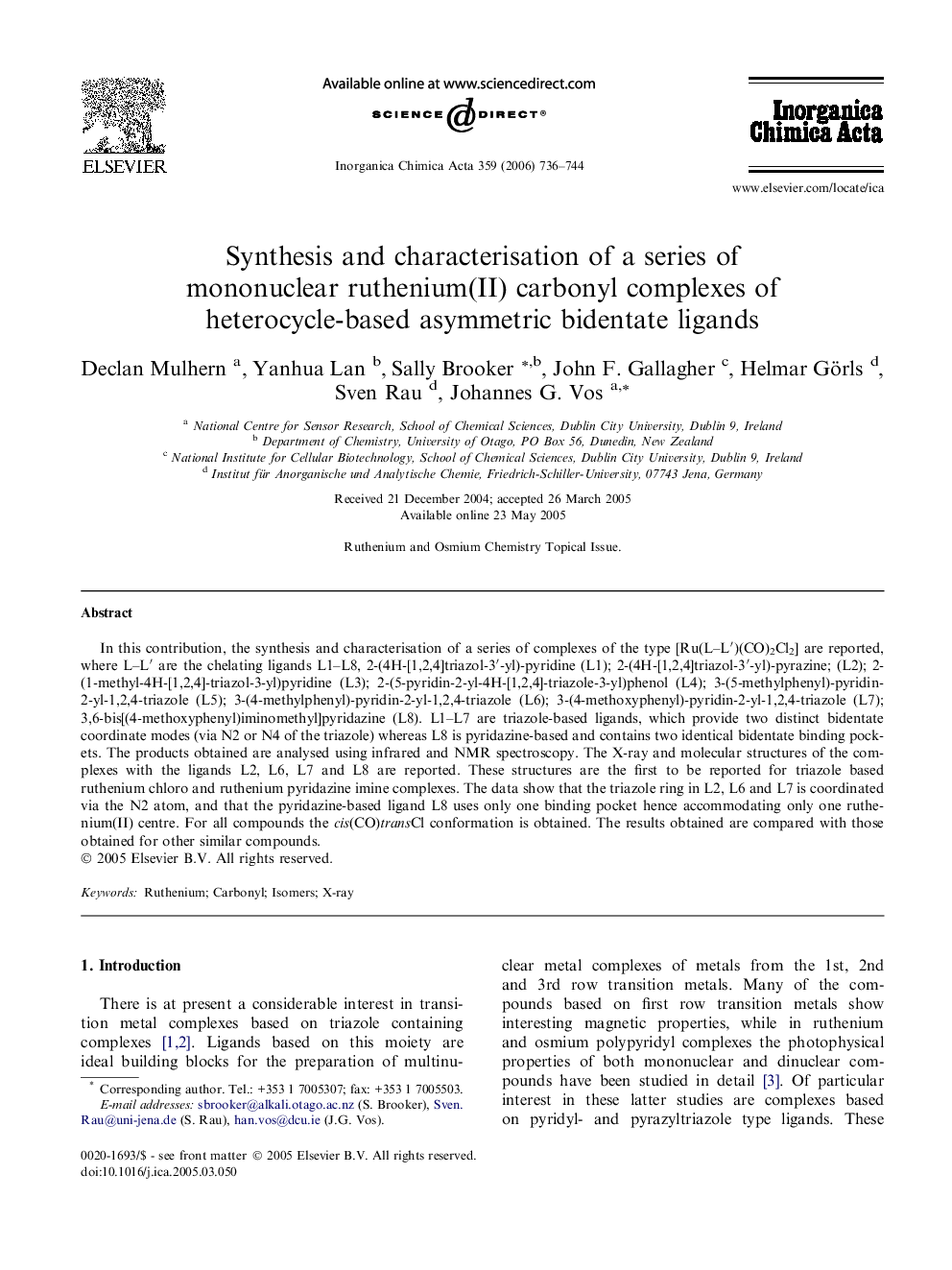| Article ID | Journal | Published Year | Pages | File Type |
|---|---|---|---|---|
| 1310164 | Inorganica Chimica Acta | 2006 | 9 Pages |
In this contribution, the synthesis and characterisation of a series of complexes of the type [Ru(L–L′)(CO)2Cl2] are reported, where L–L′ are the chelating ligands L1–L8, 2-(4H-[1,2,4]triazol-3′-yl)-pyridine (L1); 2-(4H-[1,2,4]triazol-3′-yl)-pyrazine; (L2); 2-(1-methyl-4H-[1,2,4]-triazol-3-yl)pyridine (L3); 2-(5-pyridin-2-yl-4H-[1,2,4]-triazole-3-yl)phenol (L4); 3-(5-methylphenyl)-pyridin-2-yl-1,2,4-triazole (L5); 3-(4-methylphenyl)-pyridin-2-yl-1,2,4-triazole (L6); 3-(4-methoxyphenyl)-pyridin-2-yl-1,2,4-triazole (L7); 3,6-bis[(4-methoxyphenyl)iminomethyl]pyridazine (L8). L1–L7 are triazole-based ligands, which provide two distinct bidentate coordinate modes (via N2 or N4 of the triazole) whereas L8 is pyridazine-based and contains two identical bidentate binding pockets. The products obtained are analysed using infrared and NMR spectroscopy. The X-ray and molecular structures of the complexes with the ligands L2, L6, L7 and L8 are reported. These structures are the first to be reported for triazole based ruthenium chloro and ruthenium pyridazine imine complexes. The data show that the triazole ring in L2, L6 and L7 is coordinated via the N2 atom, and that the pyridazine-based ligand L8 uses only one binding pocket hence accommodating only one ruthenium(II) centre. For all compounds the cis(CO)transCl conformation is obtained. The results obtained are compared with those obtained for other similar compounds.
Graphical abstractIn this contribution, the synthesis of a number of new complexes of the type [Ru(L–L′)(CO)2(Cl)2] is reported. The coordination mode of the asymmetric 1,2,4-triazole or imine containing ligands is investigated using X-ray crystallography.Figure optionsDownload full-size imageDownload as PowerPoint slide
